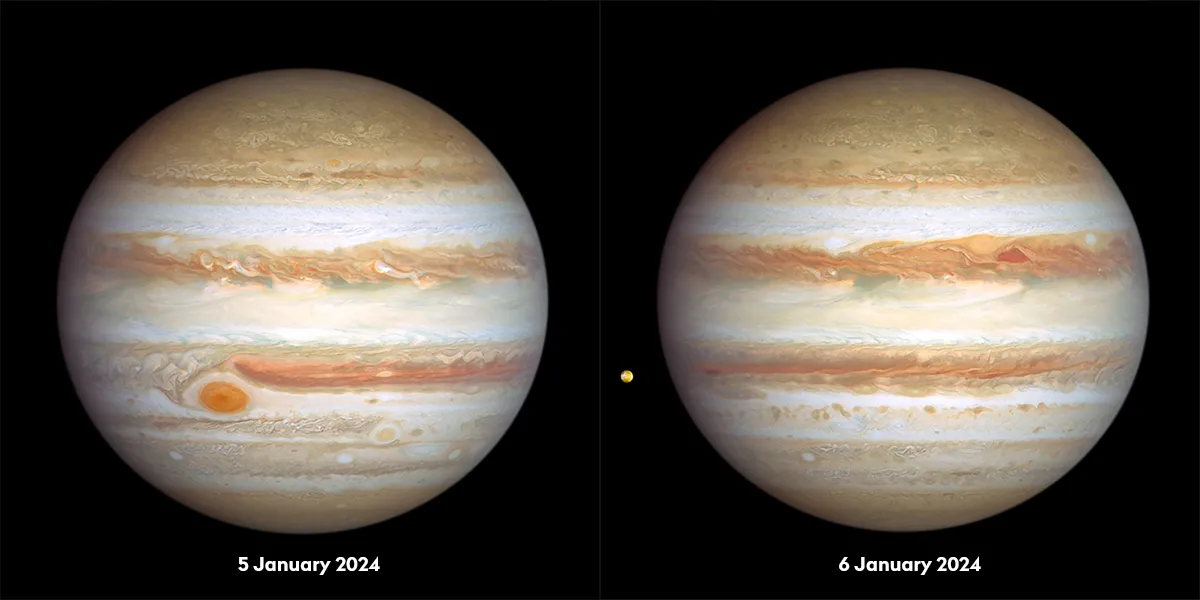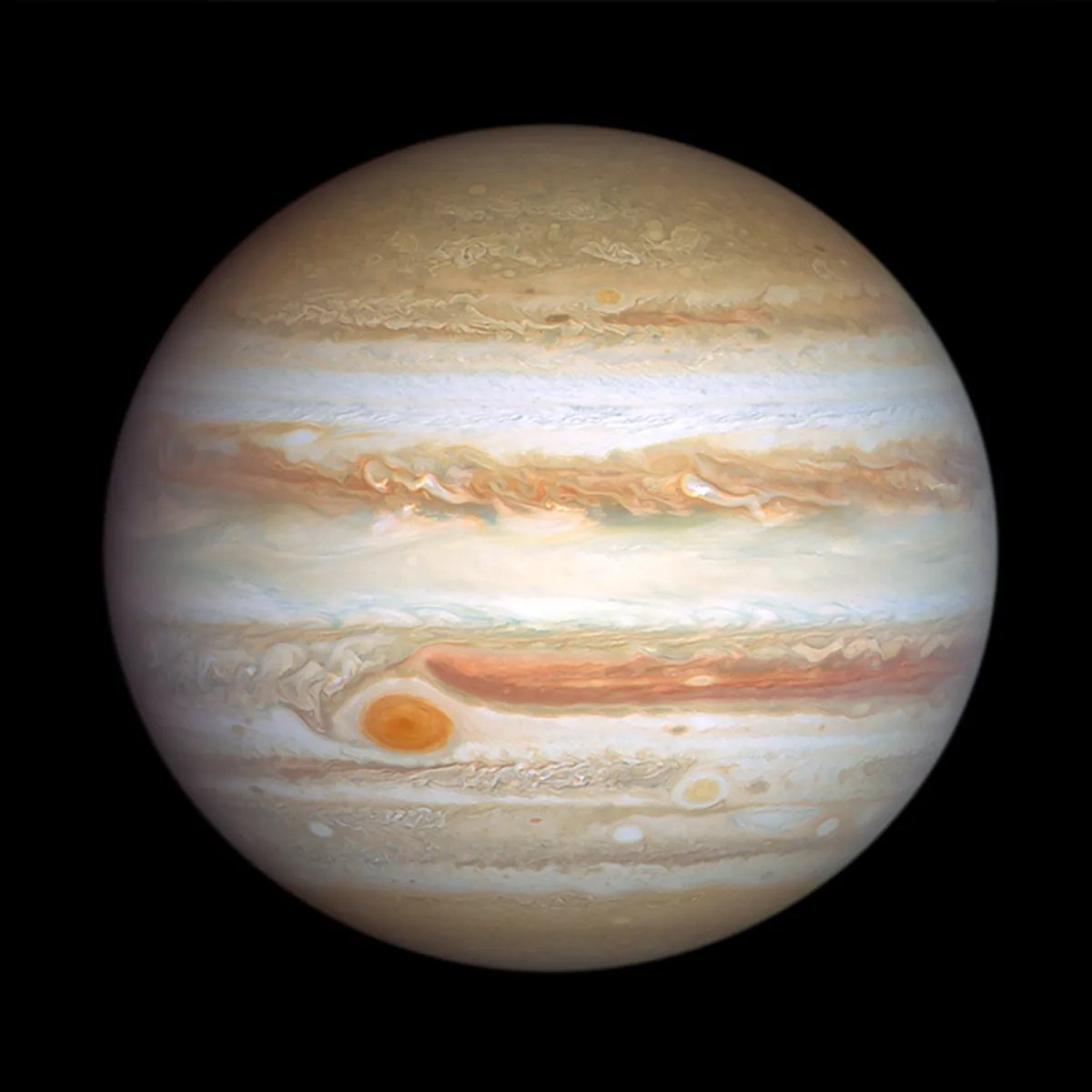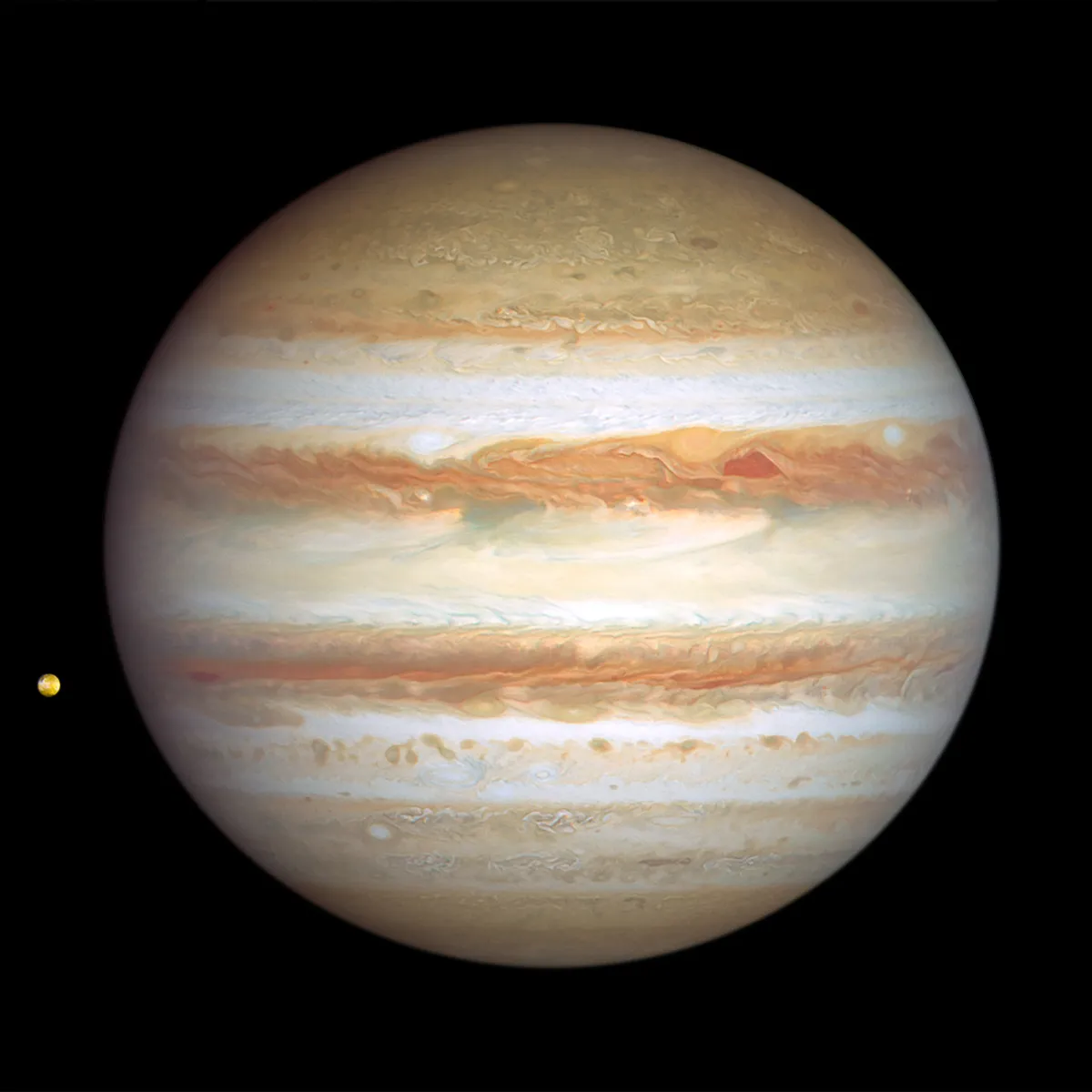The Hubble Space Telescope has captured new images of Jupiter showing details in the gas giant's stormy atmosphere and volcanic moon Io.
The images were captured on 5-6 January 2024 and show two opposite hemispheres of Jupiter.
They were taken as part of the Outer Planet Atmospheres Legacy programme, which sees Hubble observe Jupiter and the other outer Solar System planets to record how their storms and atmospheric features change over time.

In the first of Hubble's new Jupiter images, captured on 5 January 2024, the Great Red Spot is the predominant feature.
The Great Red Spot is a huge storm bigger than Earth that has been raging for centuries.
Visible to its lower right is an anticyclone that was produced by the merging of separate storms on Jupiter in 1998 and 2000, sometimes referred to as 'Red Spot Jr'.
This feature appeared red in 2006 but then developed a paler colour over time.
However, the new Hubble Space Telescope image of Jupiter shows it appearing red again.

NASA says it is not yet fully known why this feature is red in colour, but it could involve a chemical make-up including sulphur, phosphorus or organic material.
And because Jupiter's stormy atmosphere is always changing, the Great Red Spot and Red Spot Jr don't stay in the same position relative to each other: the smaller spot passes the larger one about every two years.
The second Hubble Jupiter image captured on 6 January 2024 shows the opposite side of Jupiter.

Two red storms appear just to the right of centre: a red cyclone and a red anticylone.
These storms rotate in opposite directions, indicating an alternating pattern of high- and low-pressure systems.
It's thought the two storms will pass each other because their clockwise and anticlockwise rotations make them repel each other.
"The many large storms and small white clouds are a hallmark of a lot of activity going on in Jupiter's atmosphere right now," says OPAL project lead Amy Simon of NASA's Goddard Space Flight Center in Greenbelt, Maryland.
However, the 6 January image has another visual treat, and that's the presence of Io, one of Jupiter's Galilean moons.
Io is the most volcanically active body in the Solar System, and its volcanism was discovered during the Voyager mission by planetary scientist Linda Morabito, who described Io as looking like "mouldy pizza".

